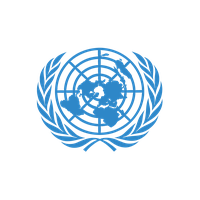
International Day for Disaster Risk Reduction
Taking place on 13th October every year.
Promoting a global culture of disaster reduction and preparedness.
About the event
The International Day for Disaster Risk Reduction aims to promote a global culture of disaster reduction, including disaster prevention, mitigation and preparedness. Disasters can be man-made or natural and so preparing for them requires vigilance in a wide range of fields. Countries in the Global South often lack the appropriate resources to prepare for disasters at the same time as being more at risk from disasters occuring, especially with the onset of climate change. This is a day therefore to highlight the importance of disaster reduction for sustainable, equitable growth and to call for wealthier countries to support those who are most at risk.
How to approach it
First, establish an understanding of what a disaster actually is with your class. See if students can suggest some examples of a disaster. This might include natural disasters such as hurricanes, droughts or wildfires and man-made disasters such as chemical leaks, oil spills and building collapses. Then discuss how we might prevent these different things. For natural disasters it's often a case of designing communities capable of withstanding disasters such as flood protections or earthquake resistant housing. It’s also about the capacity of scientists and meteorologists to monitor and predict potential extreme weather events. For man-made disasters it's often about appropriate regulation that ensures buildings, factories and infrastructure are maintained and designed effectively. Additionally, you could suggest that avoiding dangerous industrial processes all together (e.g. fracking, oil drilling, and the manufacture of harmful chemicals) will help prevent disasters.
After this, suggest that being this prepared requires money, resources, time and expertise. This is when to bring in a global angle. Richer countries can afford to prepare more effectively for disasters while poorer countries cannot. This problem is compounded by the fact that many poor countries are already in higher disaster risk zones and are more vulnerable to the extreme weather and heat induced by climate change. Show that what is needed therefore is for wealthier countries to support more vulnerable ones.
This point can be reinforced by emphasising the values of cooperation and compassion. In times of crisis or disaster the only effective way to help people is to work collectively and without discrimination. It is only then that we can direct resources effectively and support as many people as possible. You could show this by asking students to imagine a mini crisis like a small flood in school or if a fire broke out. Ask: what is the best way for people to act? How would we be able to help people the best? Through this you can show that people are happier and better protected when we work together and look out for everyone. This is the case at a small scale and a large international scale between countries.
Organised by
United Nations

Conversation starter
Imagine if you came across a small flood or fire in your school. What would be the best way to resolve the situation? Would it be best to work together with your teachers and students? Or would it be best for everyone to look after themselves? Small scale incidents like this are exactly like big disasters such as floods and forest fires. The more we work together, the safer we all are. Given this information, how do you think richer countries should support poorer ones? How could they help prevent disasters and the effects of climate change?




